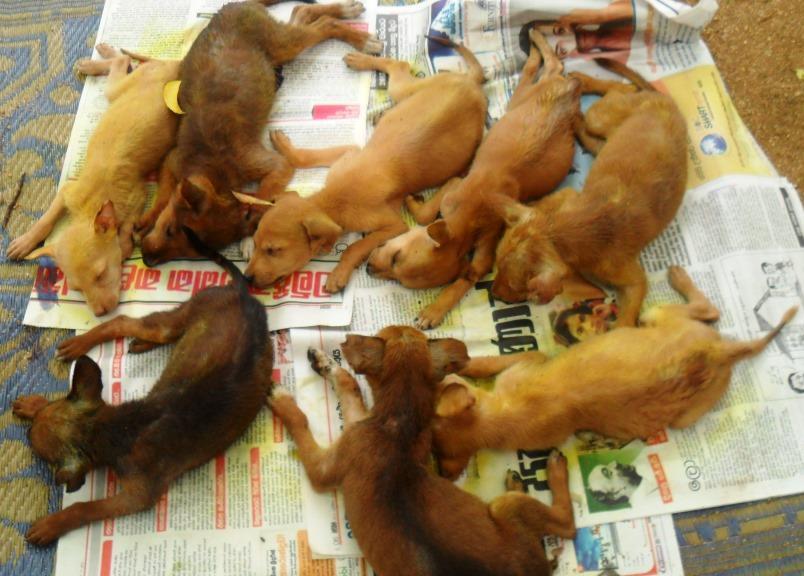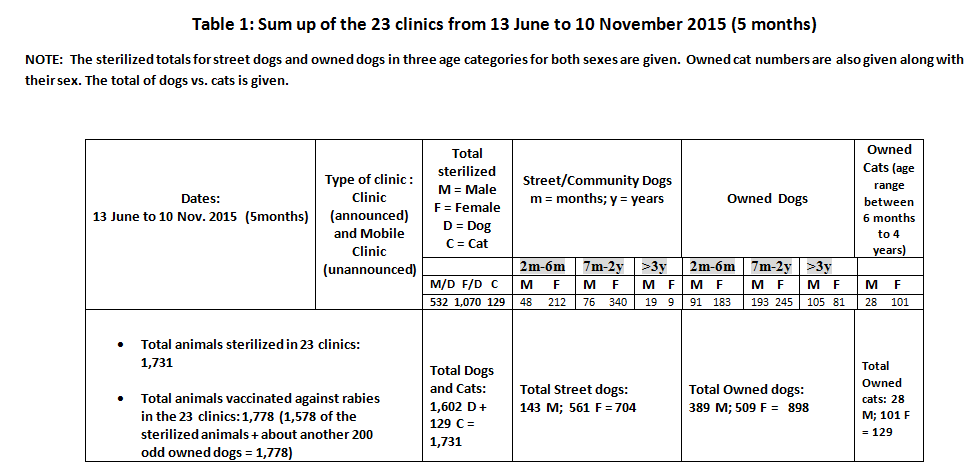
Who are Community Dogs?
Community dogs are found all over Sri Lanka.
These are our own brand of dogs whom we call “Sri Lankan dogs”, living in public areas, such as schools, offices, markets, super markets, hospitals, police stations, security points, bus terminals, railway stations, religious places, taxi-stands, motor -car repair garages, etc.
These dogs do not have their own homes, but are highly tolerated and fed collectively by people in a particular locality. Most of them have even names!! They are the pets of everybody!
Just that these caring people need that little bit of help by animal welfare organizations like KACPAW to have the dogs spayed/neutered and treated for mange, venereal tumours, and any other illnesses and/or injuries, which is what KACPAW does almost on a daily basis.
Such beneficial help for these dogs is highly appreciated by the people. Sometimes, particularly once they are spayed, they get adopted into individual homes.
[WRG id=328]
Simple Arithmetic: Dog Multiplication!

♦ Did you know that 100 unsterilized dogs will give rise to 3,000 dogs in an year?
♦ By sterilizing 2,500 dogs in 2015, KACPAW has prevented the emergence of 75,000 dogs in 2015 alone!!
♦ Calculate that for 20,000!! The answer is 600,000!!
♦ Actually it is 20,000 +++ dogs whom we have sterilized over the years, but 20,000 is good enough!
♦ We will do more sterilizations in 2016! But we need help!
♦ Please support a sterilization. You will see less suffering of dogs on the streets of Sri Lanka.

Facts and Stats for the National Spay Programme (NSP)
Do you know that in Sri Lanka that there are State-funded free sterilizations for female dogs across the country? Unique right!! A huge budget is allocated by the State for this humane dog control measure.
And do you know that KACPAW provided the model by February 2007 for this countrywide programme activated since 2008 by the Ministry of Health?
It is thanks to the NSP that the No-Kill Policy on dogs still stands. Our dog population has gone down by several hundred thousand by now!
KACPAW is in constant dialogue with the Ministry in a bid to make the NSP more and more effective.
You might be interested in these Facts and Stats KACPAW shared in November 2015 with the Ministry after we analyzed the trends we noted in sterilizing 1,731 dogs (mostly in the Central Province and this number included 129 cats) in 23 clinics over 5 months, based on our Table 1 data:

1. There are hardly any street/community FEMALE dogs who are over 3 years of age.
1a. People, in our 23 clinics, however, got sterilized 186 owned dogs (both male and female) who are over 3 years of age, some quite old. This goes to show the value people have placed on sterilization of dogs.
1b. Also, our data show that either typical street dogs do not live beyond about 2 or so years as commonly believed or those over 2 or 3 years must be already spayed and become part of the community-cared for dogs.
1c. People readily accept sterilized dogs now and begin caring for them and this is how Street Dogs become Community Dogs.
1d. The advantage is that Community Dogs can be handled for annual rabies vaccinations and for any veterinary issues such as treatment.
2. The highest number of FEMALE DOGS is in the 7 month to 2 year street/community dog category, i.e., 340 (Table 1). These dogs are healthy and capable of giving birth to several rounds of litters.
2a. Also note in Table 1 that there were another 260 FEMALE STREET DOGS in the 2-6 month age category, ready to procreate in a few months’ time.
2b. This highlights the need for continued sterilizations at least annually.
3. But people seem to be bringing up more female dogs in their homes now as they have the facility to have them spayed. Compare in Table 1: 509 OWNED FEMALE DOGS vs. 561 female street/community dogs.
3a. It is the excess pups from these owned female dogs that get dumped and become street dogs and continue the cycle of street dogs.
3b. So it is extremely important to sterilize owned female dogs comprehensively via the NSP as it would lead to the definite and drastic reduction of the emergence of street dogs and stabilize the dog population.
4. There is a very high demand for sterilization of female dogs amongst the public now and if the services are provided they do not hesitate to have their dogs spayed.
4a. The NSP can certainly cash in on this new trend in 2016.
5. Another trend we saw is that amongst the litters, the number of female pups has seemed to increase. This must be Nature’s way of combating our plans to eliminate street dogs by sterilizing!!
5a. This trend could have a connection with the fact that people are now bringing up more females (see no. 3 above) because people do not worry too much about bringing up female dogs as they have an accessible facility to have their dogs sterilized thanks to the NSP. We come across many who say they picked up the female pup from the street.
5b. People are knowledgeable about the benefits of sterilization and are very appreciative of the service.
6. Where there have been several rounds of NSP clinics annually, the number of dogs to be sterilized is significantly less (Rathnapura District) when compared to any location in the Central Province where the NSP was not conducted for nearly 3 years, including 2015, in which year the state-funded sterilizations started only around October, to be severely hampered by rain.
6a. This very visible fact clearly highlights the need for systematic ANNUAL state-funded sterilizations to be started at the BEGINNING of each year to negate the inability to conduct clinics during the rainy months or during extreme climate conditions.
6b. A lull in the programme leads to a serious negation of the population control effects achieved via previous clinics as appeared to have happened in the Central Province.
7. The situation in the Central Province needs to be addressed at the earliest possible time in 2016, ideally January (for all areas too), to prevent repeat situation of 2015 with dire results that negate the NSP achievements with regard to dog population control and sustainability via sterilization.
NB: The Ministry was very pleased to get these significant data from KACPAW!
Here are some FB links on our clinics:
https://www.facebook.com/media/set/?set=a.10153768094534357.1073742422.76793989356&type=3
https://www.facebook.com/media/set/?set=a.10153772608869357.1073742426.76793989356&type=3
https://www.facebook.com/media/set/?set=a.10153774906794357.1073742428.76793989356&type=3
https://www.facebook.com/media/set/?set=a.10152923620964357.1073742195.76793989356&type=3



